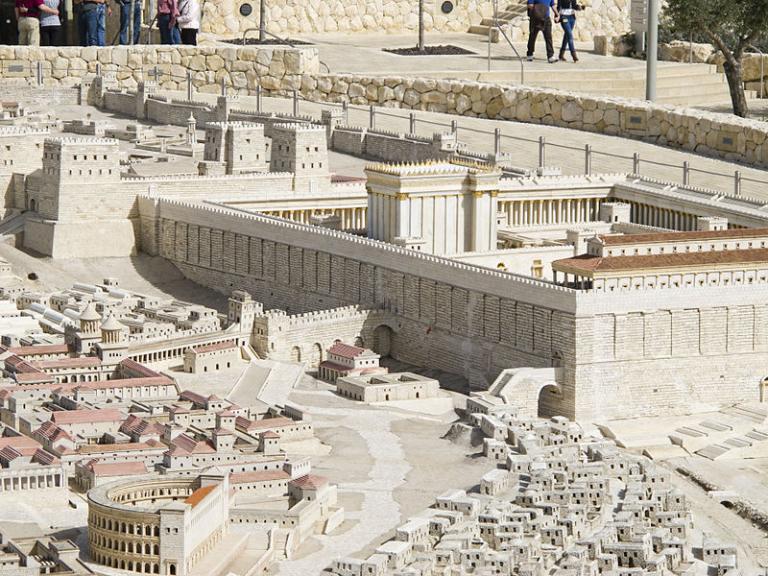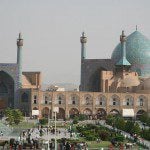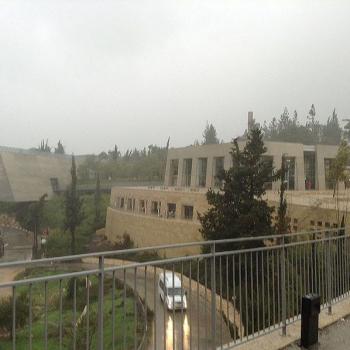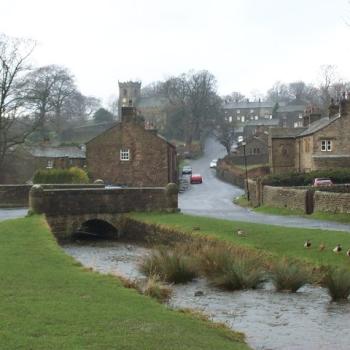
(Wikimedia Commons public domain photograph)
In 63 B.C., Judea became a client-state of the new superpower, Rome. Thus, as the Christian era dawned, the vast majority of the Jewish population—in Palestine and in other centers such as Alexandria—lived in areas under Roman control. At first, the Romans didn’t rule Palestine directly. They preferred rule through locals, such as the infamous Herod.
Herod saw himself as something of a reformer, dragging a backward people kicking and screaming into the modern age. He sought to weaken the power of rigorist Judaism by separating “church” and state. One of his first acts upon coming to power in 37 B.C. was to execute forty-six leading members of the Sanhedrin, whose chief sin was seeking to uphold the law of Moses in secular matters. Largely for reasons of personal interest, he wanted the Sanhedrin to be a religious court only. Herod did not seek to become high priest, but he made it an appointed post to which he could name virtually anybody he liked, any time he liked. He favored the Jews of the diaspora—that is, those who lived abroad, or were “dispersed”—and he was their greatest patron, endowing charities, synagogues, and libraries in Alexandria, Rome, Babylon, and throughout the world, wherever Jews were to be found. But his sense of Jewish destiny also allowed him to rebuild the temple of Apollo at Rhodes and to single-handedly save the cash-strapped but explicitly pagan Olympic games, which earned him great popularity beyond the Jewish community. On the coast, he created the new port city of Caesarea, in honor of his patron, Augustus. In Jerusalem, after he’d established a firm grip on power, he founded both a theatre and an amphitheatre— among the most Greek of institutions. He thought diaspora Jews were more sophisticated, more open, than the benighted inhabitants of Judea, so he brought them in to fill many of the municipal offices in Jerusalem and throughout the area. He even favored diaspora Jews for the office of high priest. The construction of a massive new temple was part of his modernizing plan to make Jerusalem not merely the provincial capital of Judea but the capital of Jews worldwide. The temple was to be—and indeed was—a spectacle famous the world over, one that made his name and the name of Jerusalem itself well known.
Herod’s temple became a repository of riches. Even Gentiles and foreigners offered gifts and sacrifices. Kings such as Artaxerxes and Augustus donated golden vessels to it, which were stored in its treasuries. And Jews throughout the world were hardly behind in their generosity. Josephus says the temple became “the general treasury of all Jewish wealth.”[1]
We know a great deal about the temple of Herod. Its platform covered thirty-five acres and was a mile in circumference. Those who have been to Jerusalem and have had the opportunity to stand beneath the platform are often struck by its height, but it was actually twice as high then as it is now, since 2,000 years of rubbish have covered up many of the lower courses of stone. It was an immense structure, and it was clearly designed to impress. Gates and decorations were covered in gold and silver. An unusually white stone was used for its walls, which gleamed for miles in the bright Palestinian sun. Very little money was spent on the actual interior of the temple, which was relatively plain. After all, Herod was not from a priestly family and thus could not even enter the inner court. So why spend valuable resources on it? And, anyway, the chief aim of the building was to impress mortal human beings, and the overwhelming majority of those who were to be impressed also could not enter the most sacred sanctuaries. (This says much of Herod’s motives.)
However, if buildings, even impressive ones, do not last forever—and we all know that the temple of Herod did not last through even the first century after Christ—their builders certainly do not live forever. Just before his death, Herod ordered a great golden eagle to be placed above the entrance to the temple. Pious Jews at Jerusalem were outraged, and a group of Torah students managed to climb up and smash the eagle to pieces. Sick as he was, Herod responded with his typical cruelty. According to most modern scholars, he passed to his eternal reward in the spring of the year 4 B.C., shortly after having the students burned to death. (It was a typical action for the man who, according to the gospel of Matthew, had killed all of the infant children in Bethlehem and surrounding areas just a short while before.)
[1] 1 Maccabees 14:41 (Jerusalem Bible translation).












